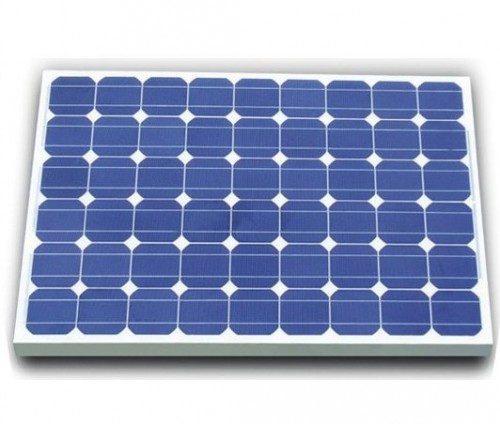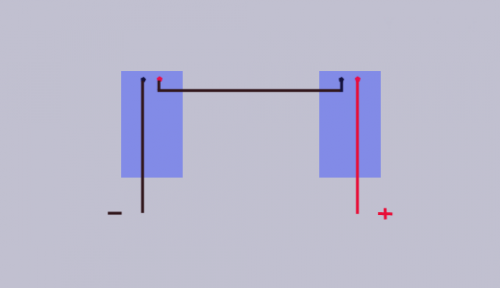Modern life dictates new rules, and alternative energy sources are becoming increasingly popular among owners of their own houses or country cottages. However, such a device, as a rule, is characterized by considerable cost, and not everyone will be able to purchase solar panels for the home . Therefore, the issue of personnel manufacturing of the structure is becoming increasingly important.
Content
Features of the solar panel
The solar panel is a semiconductor structure that is designed to transform solar radiation into electricity. Such systems perform the main task - uninterrupted, economical and reliable power supply of the house. In particular, it is important to install the device in hard -to -reach areas of residence, as well as in cases where interruptions often occur with the supply of electricity from the main source.
The alternative device is quite practical, since the solar panels for the home, in prices, are significantly different from the traditional source of energy supply. Do -it -yourself manufacture will allow the owner to not only save financial resources, but also optimize the power consumption.
Advantages of installing a solar battery
Among the main advantage of the solar panels, the following can be distinguished:
- ease of installation, due to the lack of the need to lay the cable to the supports;
- minimum time spent on system maintenance;
- electricity is produced with zero harm to the environmental environment;
- small weight of panels;
- lack of mobile parts of the structure;
- noiselessness during work;
- independence of the supply of electricity from the distribution network;
- the long service life of the device at minimum expenses.
The disadvantages of the solar panel
Despite the significant advantages of solar panels, some shortcomings can be distinguished in their functionality:
- labor -intensive manufacturing process;
- take up a lot of space;
- sensitivity to pollution;
- the panel does not work at night;
- the effectiveness of the work depends on the natural factor, i.e. From cloudy/sunny days.
Constructive parameters of the battery
Installation of a solar battery in a private house – the matter is feasible. However, in order for the design made by its own work to bring maximum benefits, it is worth considering some of its features. Consider the main requirements for the device of the solar panel:
- Due to the fragility of the product, it is advisable to mount the frame first, and only after the end of this process to install structural elements.
- The size of the panel depends on the functional load, but it should be borne in mind that the large box will have significant weight and require more energy conductors to fill it.
- The solar battery case must be constructed with low side sides so that their shadow does not prevent sunlight from entering the elements.
- It is advisable to process the case inside and out with moisture -resistant paint, since the structure will be under the atmospheric effects of the clock.
- In the case itself, place the substrate.
- In the lower part of the box, it is necessary to provide small ventilation holes, which will allow maintaining the required temperature in the radiator and output the gas formed during the operation of the panel.
Selection of materials for creating a panel
If you do not have the opportunity to buy solar panels for the home , then your own manufacturing is the optimal solution to the problem. Before proceeding with the formation of the device, it is worth deciding on the required materials. Let us consider in more detail what you should pay attention to when buying.
- To create a heliopanel, you will need high -quality photocells. Modern manufacturers offer two types of devices:
- elements of monocrystalline silicon, which have an efficiency of up to 13%, but are poorly effective in cloudiness;
- polycrystalline silicon photocells, the efficiency of which is up to 9%, but the intensity of their work is similar in both sunny and cloudy days.
It is advisable to use polycrystals that are easily available in sets for home energy supply.
Important! Get all the cells necessary for assembling from one manufacturer, since the products of various brands can have significant differences in the effectiveness of products. This can lead to additional difficulties during assembly, expenses and low power of the solar panel.
- To assemble a solar panel from improvised means, you will also need a set of special conductors who can connect photocells.
- It is advisable to make the body of the future panel from aluminum corners that have a low weight. The construction of other materials, for example, of wood, is permissible. But since the product will be constantly exposed to atmospheric effects, this will only reduce the life.
- The dimensions of the case for the panel are determined by the number of photos.
- For external coating of photocells, organic glass or transparent polycarbonate is suitable. You can also use tempered glass that will not pass infrared rays.
So, after a thorough choice, you will need to prepare the following materials:
- photocells in the set;
- aluminum corners;
- fasteners;
- shotok diodes;
- high -power copper electric wires;
- transparent sheet made of plexiglass or polycarbonate;
- vacuum stands from silicone;
- set of screws for fasteners;
- solder equipment.
You can purchase all these materials at the building materials store or using the online store of this topic.
Solar battery manufacturing manual
You can start assembling the structure after all the necessary materials are selected. Consider in stages the necessary actions:
- Gather together on the table a set of polycrystalline photographs. In our example, this is a set of 40 solar elements, each size of 6x6 inches.
- Since the declared capacity of the manufacturer is 4 watts, and a voltage of 0.5 volts, you will need 36 elements for a battery with a capacity of 18 watts.
- Using a soldering tool with a capacity of 25 watts, apply the contours to the photocells, creating soldered conductors from the tin. It is most convenient to solder on a flat surface of glass.
- Then, connect all the cells to each other according to the electrical circuit. Important! Regardless of the type of connection, shunting diodes necessary for installation on a “plus” terminal should be provided. For this purpose, the optimal option will be the shank diodes that will allow you to make the right calculation of solar panels for the home and avoid the discharge of the battery at night.
- Take the soldered cells to the sunny place and test their performance. In the case of normal functionality, you can proceed to assembly of the case.
- To assemble the frame, aluminum corners with low sides and metizes will be required. Apply silicone sealant on the inner faces of the rails.
- On top of this layer, lay a prepared sheet made of polycarbonate or other transparent material, tightly pressing to the adhesive contour for fixation.
- After the sealant finally dries, fasten the transparent surface and frame using meters.
- Next, it is necessary to place photocells with conductors along the inner transparent plane, adhering to a distance of 5 mm between each cell. It is advisable to make preliminary markings.
- After that, you should fix the photo pages and seal the panel so that the solar panels on the roof of the house have a long service life. To do this, apply the mounting silicone to each element and close the structure with the rear panel.
11. When the silicone is completely freezed, seal the structure entirely so that all the panels fit tightly to each other.
Solar panel connection schemes
There are two widespread varieties of connecting a solar panel. Consider each of them in more detail.
Parallel connection
In such a scheme, it is necessary to combine the terminals of both modules according to the principle of analogy: plus with plus, and minus with a minus. From any module, take the terminal (+) and (-) and bring the ends to connect to the cotoller of the charge or battery. In the case when it is necessary to combine three modules into one system, the actions will be the same: combine similar terminals of all modules, then bring the ends (+) and (-).
Conservative connection
With this connection scheme, it is necessary to combine the terminal (+) from the first module with the terminal (-) from the second, and remove the remaining ends to connect to the battery or controller. Regardless of the number of modules, the principle will remain the same.
Conclusion
Obtaining free electricity is the desire of every homeowner, which is easy to make real. Using this device and energy converter, you can create an additional source of power supply. It is important that the solar panel is environmentally friendly, reliable and inexpensive in service with a solution.
Summing up the above actions for the manufacture of the panel with your own hands, you can distinguish several basic recommendations:
- A conductor connecting solar cells into a single system must be made exactly in size of the elements. In this case, take into account the dimensions of each fragment, the distance between the plates and the length of the conductor itself on the back of the surface. This is necessary in order to quickly and carefully connect all the elements and avoid cutting the soldered conductor, since it can be easily broken by the cell.
- Apply a small amount of tin to the place of soldering, since it is poorly warming up and provokes a strong press with a soldering pencil on the plate. There is a risk of damage.
- It is advisable to first prepare the body for the battery, and then insert sunny cells with conductors into it. So you can avoid damage when moving the elements.
Instructions on how to make a solar panel can be seen in a fragment:























